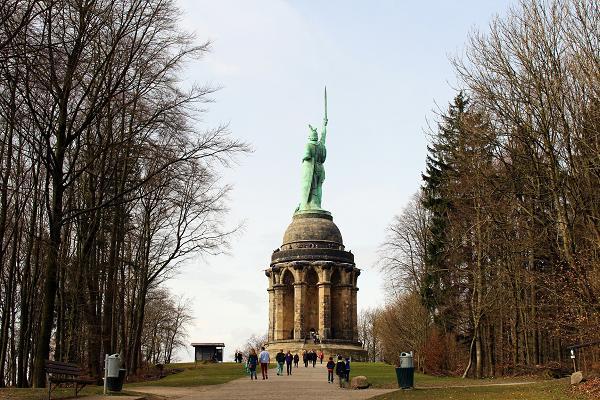Teutoburg: It is a wet morning in September of either 7 or 9 AD, and the Roman army is on the move. In response to a series of reports of unrest by their ally Arminius, chieftain of the Cherusci and trained veteran of Roman campaigns, Governer Publius Quinctilius Varus marshals the three powerful legions under his command- the XVII, XVIII and XIX- and heads out from his fortified stronghold and deep into the Teutoburg forests of Germania.
Around them trees rise up into the sky, and there is a fine rain falling, coating the forest in that dreamy quality reminiscent of fairy tales. His men are of good spirit- some have brought along their wives or merchants- to show them the unstoppable power of the legions when brought to bear against inferior forces. It will be a glorious march, and at the end a vicious battle.
Nothing the legionnaires had never experienced before. Nothing they had never defeated before. Business as usual.
Historical Background
The Varian Disaster, also known as the Battle of the Teutoburg Forest (Latin: Clades Variana) according to Roman historians, unfolded as a significant clash between the Roman Empire and Germanic tribes. This pivotal event occurred at modern Kalkriese from September 8–11, 9 AD, when an alliance of Germanic peoples, under the leadership of Arminius—a Germanic officer in the auxilia of Roman commander Publius Quinctilius Varus—ambushed Roman legions and their auxiliaries. Arminius, having acquired Roman citizenship and undergone Roman military training, strategically deceived Varus and skillfully anticipated the tactical responses of the Roman army.
Roman Ambitions
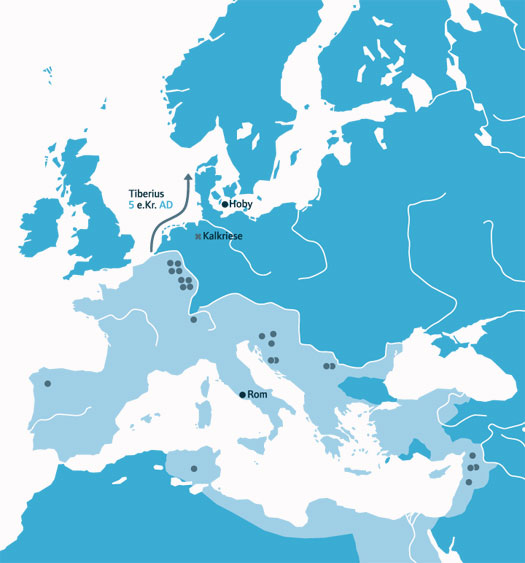
The only unconquered region between the Elbe, Rhine, and Danube was the kingdom of Maroboduus, ruler of the Marcomanni, situated in Bohemia. In the winter of 5/6, the Germania Superior army, comprising I Germanica and V Alaudae, undertook an eastern march along the river Main, establishing a substantial base at Marktbreit.
This strategic move aimed to position two legions for an assault on Maroboduus. Simultaneously, Tiberius planned to advance from the Danube to the north with eight legions (VIII Augusta from Pannonia, XIII Gemina, XIV Gemina, XV Apollinaris, and XX Valeria Victrix from Illyricum, XXI Rapax from Raetia, and XVI Gallica from Germania Superior, along with an unidentified unit) assembled at Bratislava. This operation promised to be the most ambitious ever conducted by a Roman army, but a rebellion in Pannonia disrupted its execution. Tiberius spent three years quelling the insurrection.
Meanwhile, Publius Quinctilius Varus, a prominent senator and personal confidant of Augustus, led the army of Germania Inferior. Initially successful in transforming the territory between the Lower Rhine and Lower Elbe into a regular province, Varus encountered an unexpected turn of events.
Feelings about Local Roman Rule
The Germanic frontier held a strong allure for Emperor Augustus, who viewed the tribes east of the Rhine as potential conquests. Between 6 B.C. and A.D. 4, Roman legions conducted repeated incursions into tribal territories, eventually establishing bases along the Lippe and Weser rivers.
Despite growing resentment towards the Roman presence, the tribes engaged in trade, exchanging iron, cattle, slaves, and foodstuffs for Roman gold, silver coins, and luxury goods. Some tribes even pledged allegiance to Rome, and German mercenaries served in Roman armies as far as the present-day Czech Republic.
Arminius’ Motivation
Among these mercenaries was Arminius, a 25-year-old prince of the Cherusci tribe, known to the Romans for his valor in battle. Fluent in Latin and familiar with Roman tactics, Arminius was a key figure the Romans relied on to navigate the lands of the barbarians. For his bravery, he had been granted the rank of knight and Roman citizenship. On a September day, he and his mounted auxiliaries were assigned to march ahead and rally his fellow tribesmen to suppress a reported rebellion.
While Arminius’ motives remain unclear, historians generally believe he harbored long-standing aspirations to become the king of his tribe. To achieve this goal, he devised a clever deception: reporting a fictitious “uprising” in unfamiliar territory to the Romans and leading them into a deadly trap. Despite warnings from a rival chieftain, Segestes, who repeatedly informed Varus of Arminius’ treachery, Varus chose to ignore the warnings.
Roman Tactics: Varus’ Strategy
Varus was following the standard protocol for dealing with instances of unrest. Despite the relative small size of the legions proportional to the population of the Empire, Rome asserted control often through an early form of “shock and awe.”
Mobilize the largest force it could, march straight into the offending region, and completely slaughter whomever was challenging the sovereign right of Roman rule. This is how Rome maintained control, how she gave experience to her career soldiers, and how she funded her military forces in times of peace and consolidation. And, with a few exceptions, it worked wondrously.
The Special Features of the Teutoburg Forest
The legions moved slowly, almost single file, through the forest, their supply train trailing far behind them. Bird called to one another. Animals cleared a path. The legionnaires laughed and joked as they made their way into the forest at Teutoburg Wald. Sure the violent rain was becoming annoying, and the constant pressure to keep marching was uncomfortable at best, but these were skilled fighters, a true career force, and such nuisances were just that – nuisances.
Even when the heaven opened up several days into the march, and soaked through them, loosening straps and adding undue weight to their armor and shields, the warriors kept pace, moving ever further into the forests. The mighty legions were on edge, growing anxious, but nothing more. Nothing they were not trained for, or at least that was the general line of thought.
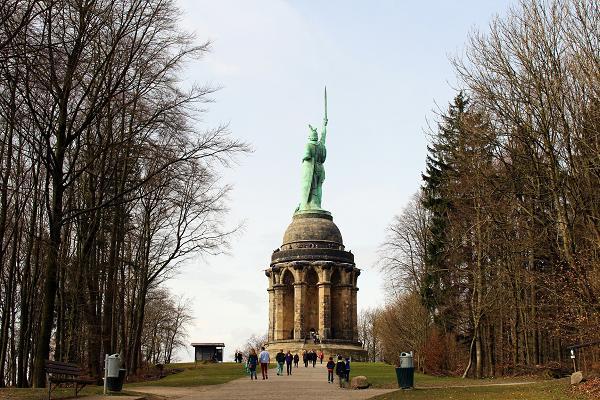
© Pixabay
Size and Composition of Arminius’s Forces
Determining the size of Arminius’s forces remains speculative, given the absence of written records from the Germanic peoples. Estimates vary widely depending on the underlying assumptions.
Historian Adrian Murdoch suggests a force of 25,000, while Peter Wells posits a range of 17,000 to 100,000, with an emphasis on 18,000 likely participating in the final stage of the battle when the Romans were routed. However, historian McNally questions Wells’s demographic calculation method, deeming the upper estimate of 100,000 highly improbable. Hans Delbrück proposes that each tribe involved probably contributed 6,000 to 8,000 fighting men, resulting in a total range of 20,000 to 30,000.
Delbrück emphasizes that these troops were not mere farmers but experienced soldiers in their own right, even though not equipped by the state as the Romans were. However, the Germanic army generally possessed inferior gear compared to the Romans.
Most soldiers lacked armor and relied on a basic shield and a hunting spear or axe. Equipment quality varied based on the wealth and status of the fighter. Those in command roles or part of a chief’s guard likely carried a heavy spear, several javelins, and high-quality shields. Nevertheless, armor was scarce and would have been acquired as spoils of war from defeated Romans or, possibly, through service as a Roman auxiliary.
Arminius Makes His Cunning Move
When Arminius took his men and rode off ahead to “clear the forest” for Varus and his legions, they were already sapped by fatigue. Trusting their Germanic allies, the column slowed to a crawl, stuck in both literal and mental mud. The thousands of German warriors moving off ahead might have seemed like a relief, perhaps a lucky moment of rest for the Romans.
What happened next might be obvious to us, aware of its place in history. But for the arrogant Varus and his men, it was a surprise on the same level as the Parthian massacre at Carrhae, when the equally arrogant General Crassus made the same mistakes for the same reasons and ended up with the same outcome.
The Great Bog
The nearest Roman base lay at Haltern, approximately 60 miles to the southwest. Despite the distance, Varus, determined, continued to press southwest on the second day. By the third day, he and his troops found themselves navigating a narrow passage between a hill and a vast swamp known as the Great Bog, with the passage sometimes no wider than 60 feet.
The chaotic and panicked procession of legionnaires, cavalrymen, mules, and carts moved forward slowly. As the Roman forces struggled, the Germanic warriors emerged from behind trees and sand-mound barriers, effectively cutting off any chance of retreat.
In open country, the superbly drilled and disciplined Roman troops would surely have prevailed. But here, with no room to maneuver, exhausted after days of hit-and-run attacks, unnerved, they were at a crippling disadvantage.
Beyond the slope, the German tribes had erected defensive structures to fend off any potential counterattack. These prepared fortifications proved effective, efficiently repelling Roman attempts to counterattack up the Kalkriese.
In the center of the Roman column, the defense crumbled, resulting in the division of the column into two parts. This division allowed the German tribes to encircle and assail the inner flanks of each section.
The Cherusci Attack
The Teutoburg forest came alive with the battle cries of the Cherusci and their allied tribes. Up and down the column, German warriors poured from the trees and tore into unprotected Roman flanks.
The entire Roman army was surrounded. Unable to form up into a battle position, and missing pieces of armor and arms that had become ungainly due to the rain, the Roman legions buckled, with some fleeing into the trees, and right into the arms of the waiting “barbarians.”
As death spread, and blood was shed, the legions broke and ran, eager to put distance between themselves and the attackers, for some open ground to fall back to a defensive stance, and maybe salvage the remainder of the expected battle. Varus’ second-in-command tried to flee on horseback, but was soon overtaken by the Germanic cavalry.
The Roman Legions Fall Apart
But this was not to be. Alone in the forest, with enemies flooding from all sides, Varus made the decision to press forward still, leaving behind supplies, wounded legionnaires, and noncombatants in a fortified campsite. The position would be lost by nightfall, and the proud tribesman would remain on his tail.
For days the massacre continued as the energized and enthusiastic tribes meted out their frustrations and their anger on the Romans who had mistreated them, and ultimately underestimated their strength. They picked off column after column, harassing the soldiers who were unable to bring their tactics to bear, tactics Arminius was well versed in himself. The legions split, with some finding sanctuary in a small fort, but with most cut off and eventually wiped out.
After the carnage, Arminius and the Germanic tribe meticulously combed the battlefield, seizing anything valuable, such as Roman armor, helmets, gold and silver, utensils, and weapons. The archaeological discoveries primarily comprise items overlooked or dropped by the victors during their looting.
Enjoying the story so far? What if you could read it in German? If you’re interested, come check out our courses.
Varus’ End in the Teutoburg forest
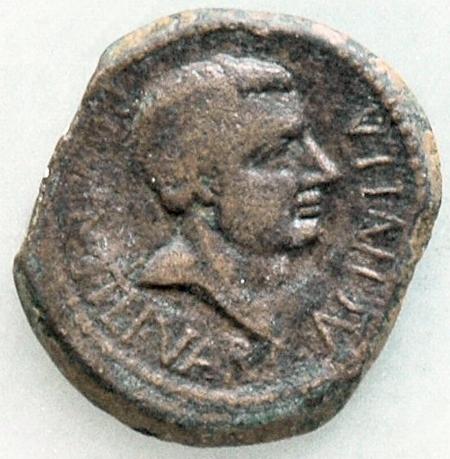
Who can say what Varus was thinking in those moments before his position was overrun, and he committed suicide rather than fall to his “allies” in the forest of Teutoburg. Did he reflect on how gullible he had been to trust a man who was native to the province and skilled in both terrain and tactics? Did he regret his treatment of the local people, who had joined Rome through reputation, but he treated as conquered subjects?
Did he question his own abilities as a soldier, politician, and governor, and how all this had failed because he had never stopped to think about what he was doing and how he was doing it? Or did he curse the forests and their unending stream of warriors that defeated three of Rome’s finest legions?
The Consequences for the Roman Empire
This we will never know. But on that day in Teutoburg Wald, the Roman forces suffered a blow to their pride that would take years to avenge, and a wound that never quite healed. It forced Rome, the principle power of its day, to pull back its expansion and set a solid border along the Rhine river. The river would remain a boundary between the Germanic and Latin cultures to come.
The Myth of the Invincible Roman Army
As Velleius Paterculus, a contemporary of Varus later said: “An army unexcelled in bravery, the first of Roman armies in discipline, in energy, and in experience in the field, through the negligence of its general, the perfidy of the enemy, and the unkindness of fortune … was exterminated almost to a man by the very enemy whom it has always slaughtered like cattle.”
Over 10 percent of the entire imperial army had suffered casualties, shattering the myth of its invincibility. Following the disaster, Roman bases in Germany were swiftly deserted.
Fearing a potential march on Rome by Arminius, Roman Emperor Augustus took drastic measures, expelling all Germans and Gauls from the city and placing security forces on high alert to thwart any insurrections. The battle outcome exposed the folly of overconfidence, and the value of respect. And it was reminded that despite its power and reach, the determination of people can have far-reaching consequences to the arrogant and unprepared.
The conflict brought an abrupt end to the era of triumphant Roman expansion, which had followed the conclusion of the Civil Wars four decades earlier. Tiberius, the stepson of Augustus, assumed effective control and prepared for the ongoing war. In response to the losses suffered, Legio II Augusta, XX Valeria Victrix, and XIII Gemina were dispatched to the Rhine as replacements for the defeated legions.
Following the battle, Arminius sent Varus’s severed head to Maroboduus, the king of the Marcomanni and another influential Germanic ruler, proposing an anti-Roman alliance. However, Maroboduus declined the offer, instead sending Varus’s head to Rome for burial. He chose to remain neutral throughout the subsequent war. It was only later that a brief and inconclusive conflict erupted between the two Germanic leaders.
Roman retaliation
In the aftermath of the devastating Battle of Teutoburg Forest, the Romans were determined to reclaim their lost territory. Germanicus, the nephew of the newly appointed Emperor Tiberius, spearheaded a strategic and relentless campaign against the Germanic coalition led by Arminius between 14 and 16 AD.
In the initial phase of the counteroffensive in 14 AD, Germanicus orchestrated a surprise raid on the Marsi, causing havoc and defeating the Bructeri, Tubanti, and Usipeti, who attempted to ambush him on the way to winter quarters. The following year witnessed two major campaigns and numerous skirmishes, with Germanicus leading a formidable army estimated at 55,000 to 70,000 men, supported by naval forces.
In the spring of 15 AD, Legatus Caecina Severus launched a second invasion of the Marsi, creating significant disruptions with an army of approximately 25,000 to 30,000. Simultaneously, Germanicus and his forces built a fort on Mount Taunus and marched against the Chatti with around 30,000 to 35,000 men. After initial successful engagements, including the capture of Arminius’ wife Thusnelda, the Roman forces revisited the site of the Teutoburg battle.
In the summer of 15 AD, near the Ems, Arminius’ troops ambushed the Romans at a location Tacitus referred to as pontes longi (“long causeways”). The ensuing two-day battle saw neither side achieving a decisive victory, prompting Germanicus to withdraw his forces back to the Rhine.
Undeterred, Germanicus continued the offensive in 16 AD, forcing a crossing of the Weser near modern Minden. The Battle of the Weser River ensued, resulting in significant casualties for the Germanic armies. The final confrontation occurred at the Angrivarian Wall west of modern Hanover, compelling the Germanic forces to retreat beyond the Elbe. By 16 CE he had reconquered the Lippe valley and most of the coast along the North Sea.
Having achieved his primary objectives and with winter approaching, Germanicus ordered a return to the winter quarters. A few additional raids across the Rhine resulted in the recovery of two lost legion eagles. Despite his success, Germanicus faced a recall to Rome, a move believed by some to be driven by Tiberius’ jealousy of his nephew’s acquired glory. Tacitus suggests that further campaigns under Germanicus might have concluded the war and facilitated Roman occupation between the Rhine and the Elbe.
The Site of the Battle Today
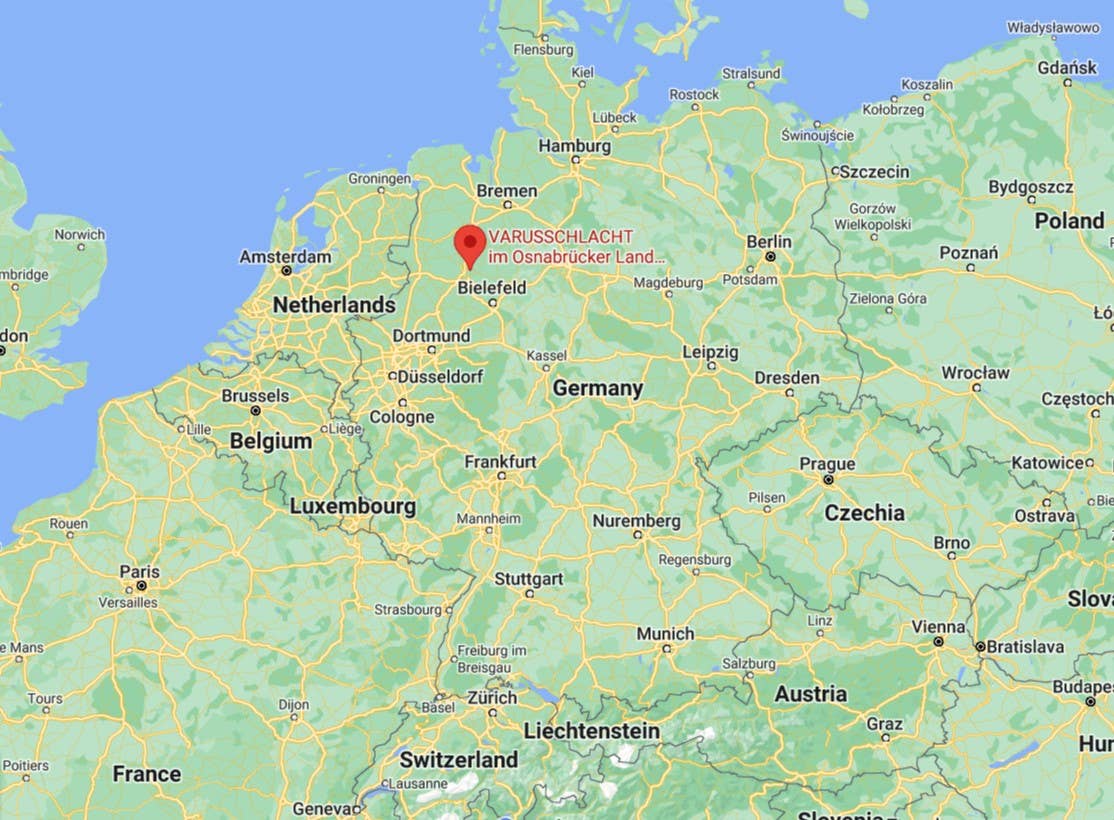
For nearly two millennia, the location of the Battle of Teutoburg Forest, also known as the Varian Disaster (Latin: Clades Variana), remained unidentified. Tacitus’ Annals provided a crucial clue, referencing the saltus Teutoburgiensis in section i.60–62, situated “not far” from the area between the upper reaches of the Lippe and Ems rivers in central Westphalia.
In the 19th century, various theories about the site emerged, with proponents of one theory advocating for a wooded ridge called the Osning near Bielefeld, subsequently renamed the Teutoburg Forest. Significant developments in the late 20th century were triggered by British amateur archaeologist Major Tony Clunn, who, while prospecting at Kalkriese Hill with a metal detector, discovered coins from the reign of Augustus and Roman sling bolts. Kalkriese, situated in Lower Saxony north of Osnabrück, was initially suggested by 19th-century historian Theodor Mommsen.
A Museum On-Site
Systematic excavations, led by Professor Wolfgang Schlüter and the archaeological team of the Kulturhistorisches Museum Osnabrück, commenced in 1987. A foundation was established to organize ongoing excavations, construct a museum on-site, and centralize publicity and documentation. Since 1990, Susanne Wilbers-Rost has directed the excavations.
Unearthed artifacts and evidence along a corridor spanning almost 24 kilometers from east to west and just over 1.6 kilometers wide revealed a pre-constructed zig-zagging wall of peat turves and packed sand. This defensive structure, coupled with concentrations of battle debris, reflected the Romans’ inability to breach the strong defense of the Germanic tribes.
Human bones aligned with Tacitus’ account of the Roman legionaries’ burial. Additionally, coins with the countermark VAR, distributed by Varus, supported the site’s identification. Consequently, Kalkriese is now recognized as a pivotal location in the Battle of Teutoburg Forest.
The Museum und Park
The Museum und Park Kalkriese includes an expansive outdoor area with trails leading to a recreated part of the earthen wall from the battle and other outdoor exhibits. An observation tower, housing most indoor exhibits, offers visitors a comprehensive view of the battle site. Another building serves as the ticket center, museum store, and restaurant, housing a vast collection of artifacts found at the site, such as fragments of legionaries’ studded sandals, spearheads, and a silver-plated Roman officer’s ceremonial face-mask.
The Legacy
Tacitus, the Roman historian, acclaimed Arminius as the liberator of the Germanic tribes, acknowledging his role in stalling the mighty Roman Empire at its zenith. In the 19th-century German unification, Arminius became a symbol of national unity and freedom.
However, post-World War II, his relevance waned in Germany due to connections with militaristic nationalism. The 2,000th anniversary of his Teutoburg Forest victory received limited commemoration in Germany.
The Name of Arminius
The German rendering of Arminius as the name Hermann originated in the 16th century, potentially attributed to Martin Luther. In German, Arminius was commonly identified as Hermann der Cherusker (“Hermann the Cheruscan”) or Hermann der Cheruskerfürst (“Hermann the Cheruscan Prince”). Etymologically, Hermann signifies “Man of War,” derived from the Old High German heri, meaning “war,” and man, signifying “person” or “man.”
Political Connotations of The Historic Event
The resurgence of the Germanic triumph gained momentum in the 15th century with the rediscovery of Tacitus’ histories. Since then, the Battle of Teutoburg Forest has been perceived as a decisive clash that marked the conclusion of Roman expansion into northern Europe. This viewpoint gained particular prominence in the 19th century, intertwining with the mythology of German nationalism.
The significance of the battle site held unique political connotations for the German states in the 19th century. Historian Michael McNally highlights that, unlike the French, who found a hero in Vercingetorix from Julius Caesar’s Gallic Wars, Germany faced challenges locating a comparable national figure associated with the Varian Disaster.
In 1841, construction began on a monument near Detmold, outside the town of Detmold, on the summit of Tuetberg. Completed in 1875, the statue atop the monument faced west, towards France, symbolizing the rivalry between the two nations.
The Hermann monument
Functioning as a symbol of unified Romantic nationalism, the Hermannsdenkmal, a monument featuring Hermann crowned by a statue, was erected in a wooded area near Detmold, believed at the time to be the battle site. Funded largely by private donations, the Hermann monument remained unfinished for years and reached completion only in 1875, following the unification of Germany after the Franco-Prussian War of 1870–71. The finalized monument then became a symbol of conservative German nationalism. According to journalist David Crossland, the former fervent nationalism has evolved into a more casual patriotism, primarily evident at events such as the soccer World Cup.
Want to learn more about German history? Check out our series here.
FAQs about the Battle of Teutoburg Forest
Here are some of the questions people ask about the Battle of Teutoburg Forest between the German tribes and the Roman armies.
How long did the Battle of Teutoburg Forest last?
The Battle of Teutoburg Forest is estimated to have lasted for several days, with the exact duration not precisely documented in historical records. The battle took place in the year 9 AD between the Roman army, led by Publius Quinctilius Varus, and an alliance of Germanic tribes, primarily led by Arminius.
Were there any survivors from the Battle of Teutoburg Forest?
The fate of survivors from the Battle of Teutoburg Forest remains uncertain. Records from ancient historians suggest that few soldiers from the Roman troops managed to escape the devastating ambush led by Germanic warriors in 9 AD, but the exact number and their subsequent fates are not well-documented.
How many Romans were killed in the Teutoburg Forest?
Estimates of the number of soldiers from the Roman army killed in the Battle of Teutoburg Forest vary, but it is believed that around 15,000 to 20,000 Roman soldiers, including three Roman legions led by Publius Quinctilius Varus, lost their lives during the ambush.
Does Teutoburg Forest still exist?
Yes, Teutoburg Forest still exists. It is a dense, wooded region located in present-day Germany, covering parts of the states of Lower Saxony and North Rhine-Westphalia. The area is a popular destination for hiking and exploring, and it holds historical significance due to the Battle of Teutoburg Forest.
Did the Romans get revenge for Teutoburg Forest?
The Romans did attempt to avenge the defeat at Teutoburg Forest, but they were not entirely successful. In subsequent years, the Roman Empire engaged in campaigns against Germanic tribes, seeking to reestablish control in the region. However, the loss at Teutoburg Forest had a lasting impact, and the Romans were never able to fully recover the territory they had lost in that pivotal battle.
Can you visit the Teutoburg Forest?
Yes, Teutoburg Forest is a real location in Germany, and visitors can explore the area. The Teutoburg Forest, or Teutoburger Wald in German, is a range of low, forested hills in the North German Plain, stretching along the cultural region of Westphalia.
The Kalkriese Museum and Park is a significant site for those interested in the history of the Battle of Teutoburg Forest. Visitors can enjoy hiking and exploring the scenic landscapes, as well as learning about the historical and cultural significance of the region.
Summing Up: The Battle of Teutoburg Forest
The conclusion of the Battle of Teutoburg Forest reverberates through ancient history as a pivotal moment. Roman General Varus faced a devastating defeat at the hands of Germanic forces led by Arminius. This infamous “Varus battle” showcased the determination of Germanic warriors and echoed as a cautionary tale in Roman military annals.
As Germanic tribesmen seized victory over the three legions, the Roman defeat prompted a strategic retreat, solidifying the Rhine as a cultural and military boundary. Want to learn more? Come check out our blog!

